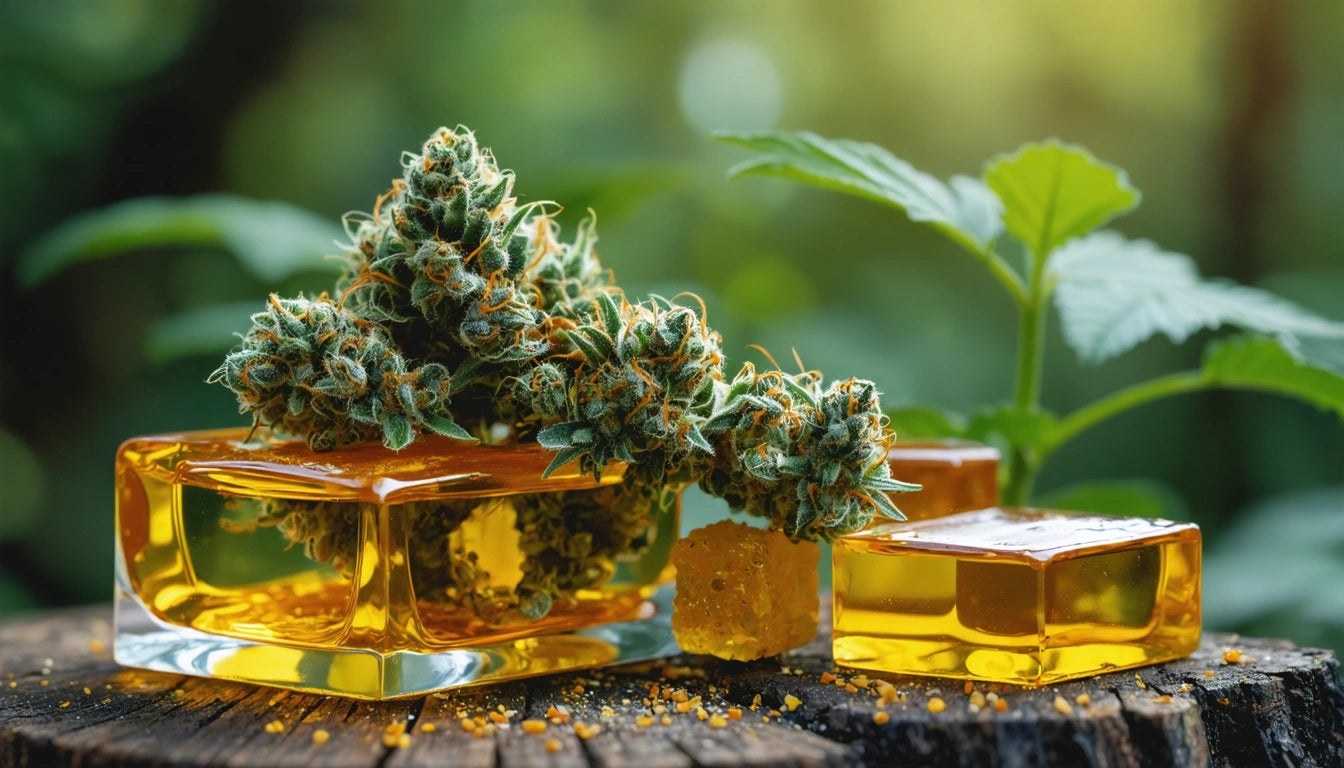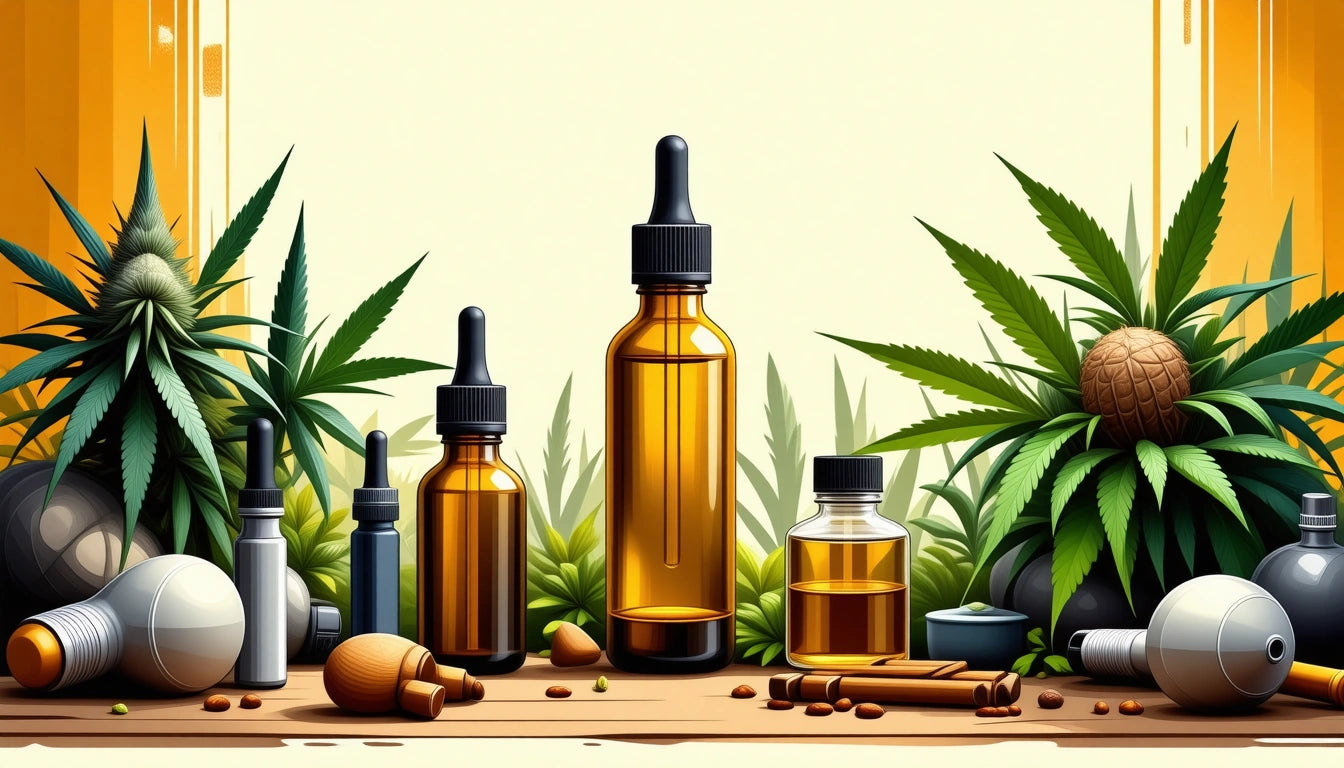Table of Contents
Understanding the Differences Between THC, THC-A, and THC-B
The cannabis plant contains hundreds of compounds, with cannabinoids being the most studied for their various effects. Three of these cannabinoids, THC, THC-A, and THC-B, are frequently confused despite having distinct properties and effects. This guide clarifies what THC-A is versus regular THC and explores the emerging cannabinoid THC-B.
Chemical Structure Basics: THC, THC-A, and THC-B
Delta-9-tetrahydrocannabinol (THC) is the primary psychoactive compound in cannabis. However, it doesn't naturally exist in significant quantities in the raw plant. Instead, the plant produces tetrahydrocannabinolic acid (THC-A), which is non-intoxicating in its raw form.
THC-A has an additional carboxyl group (COOH) in its chemical structure compared to THC. When exposed to heat through a process called decarboxylation, THC-A loses this carboxyl group and converts to THC, becoming psychoactive. This is why raw cannabis doesn't produce intoxication until heated through smoking, vaping, or cooking.
THC-B (tetrahydrocannabibutol) is a relatively newly discovered cannabinoid with a longer alkyl side chain than THC. According to this comprehensive guide on THC types, this structural difference potentially gives THC-B different binding properties with the body's endocannabinoid receptors.
Effects and Potency Comparisons
THC-A vs THC Effects
What does THC-A mean for users? Unlike THC, THC-A doesn't produce intoxication because it doesn't bind effectively to CB1 receptors in the brain. However, it may offer anti-inflammatory, neuroprotective, and anti-emetic properties without the high associated with THC.
When THC-A converts to THC, it creates the euphoric effects cannabis is known for. THC binds directly to CB1 receptors in the central nervous system, producing relaxation, altered perception, increased appetite, and in some cases, anxiety or paranoia.
THC-B Potency
What is THC-B's potency compared to regular THC? Early research suggests THC-B may be more potent than standard THC due to its stronger binding affinity for cannabinoid receptors. Users report similar but potentially more intense effects than traditional THC, though research is still preliminary.
For those interested in exploring different cannabinoid experiences, quality grinding equipment can help prepare plant material for optimal consumption, whether for decarboxylation or extraction purposes.
Legal Status and Regulatory Considerations
The legal distinction between these compounds creates significant confusion. In many jurisdictions, THC is specifically regulated or prohibited, while THC-A might exist in a legal gray area. This has led to products marketed as containing "THC-A" rather than "THC" in some markets.
Common misconceptions about THC vs THC-A often center around legal definitions and testing methodologies. Labs may report total potential THC (THC + THC-A after decarboxylation) or separate values, affecting how products are classified legally.
THC-B faces even more regulatory uncertainty as a newer compound with limited research. Its legal status often depends on broader cannabis and hemp regulations in each jurisdiction.
Consumption Methods and Bioavailability
The method of consumption significantly impacts how these cannabinoids affect the body:
- Raw consumption: Eating raw cannabis provides THC-A without significant conversion to THC
- Smoking/vaping: Heat instantly converts THC-A to THC
- Edibles: Cooking decarboxylates THC-A into THC before consumption
- Tinctures/oils: May contain varying ratios depending on processing methods
The bioavailability (how much enters the bloodstream) varies by consumption method. Inhaled THC has higher bioavailability (up to 30%) compared to oral consumption (around 5-20%) due to first-pass metabolism in the liver.
For THC-B, optimal consumption methods are still being researched, though it appears to follow similar patterns to traditional THC.
Medical Applications and Research
Research into the therapeutic potential of these cannabinoids shows distinct applications:
THC-A Medical Potential
What is THC-A good for medically? Studies suggest it may have anti-inflammatory, neuroprotective, and anti-nausea properties without psychoactive effects. This makes it potentially valuable for patients seeking relief without impairment.
THC Medical Applications
THC has well-documented benefits for pain management, appetite stimulation, nausea control, and sleep. However, its psychoactive effects can be limiting for some patients.
THC-B Research
Research on THC-B is preliminary but suggests it may have unique therapeutic properties that differ from standard THC. As this comparison of THC variants explains, minor structural differences can significantly impact therapeutic potential.
Future Developments in Cannabinoid Research
The cannabis industry continues to evolve as researchers discover and isolate more cannabinoids. Understanding what THC-A is versus THC and exploring newer compounds like THC-B represents just the beginning of cannabinoid science.
Future research will likely focus on how these compounds interact with each other and with terpenes (the entourage effect), potentially leading to more targeted therapeutic applications. The distinction between THC-A vs regular THC may become increasingly important as medical cannabis programs expand.
For consumers and medical patients, this growing knowledge base offers more options for tailored experiences and treatments. Whether seeking the non-intoxicating benefits of THC-A, the familiar effects of THC, or exploring newer cannabinoids like THC-B, understanding these differences empowers more informed choices.











Leave a comment
All comments are moderated before being published.
This site is protected by hCaptcha and the hCaptcha Privacy Policy and Terms of Service apply.